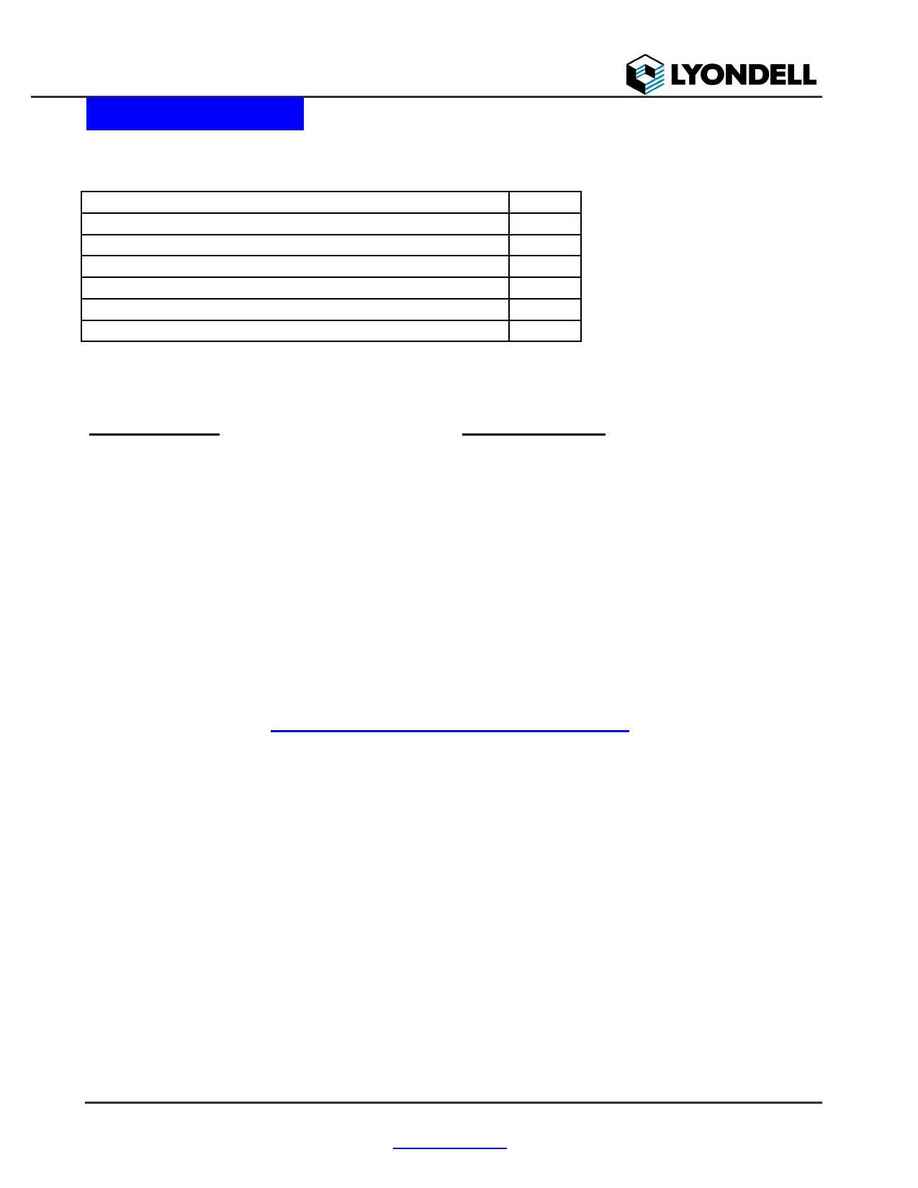
For more technical information or formulation assistance, please see contact information on last page.
www.lyondell.com
APPLICATION DATA
RESIN PROPERTIES
Solids by Weight
100%
Number Average Molecular Weight (Mn), by GPC)
3,200
Weight Average Molecular Weight (Mw), by GPC)
8,400
Hydroxyl Number (mg KOH/gram)
125
Hydroxyl Equivalent weight
448
Glass Transition Temperature (Tg), ║C
78
APHA Color (Pt-Co 30% in MEK)
40
These are typical values, not sales specifications
Resin Features
All primary hydroxyl functionality
Evenly distributed, high functionality
High Tg with low MW
Compatible with both acrylic and polyesters
Coating Benefits
Improved reactivity
Excellent solvent and chemical resistance;
effective at low use levels
Improved hardness with low solvent demand
Formulation flexibility
STARTING POINT FORMULATIONS
TWO-COMPONENT PARQUET FLOORING
Chemical resistance, hardness and drying are important properties for two-component
parquet flooring formulations.
Commercial, medium-Tg acrylic resins do not always dry rapidly enough or give hard
enough coatings without further modification. Cellulose acetate butyrate resins (CABs) are
commonly used to improve the sandability and dry times. Unfortunately, CABs can
significantly increase the cost of the final formulation. SAA-103 was evaluated vs.
CA
TM
381-0.5 in the following formulation and was found to give improved properties at
lower cost. The formulations were adjusted to maintain a constant isocyanate index.
SAA 103 decreased the solution viscosity (VOCs) and increased the gloss significantly. A
significant improvement in chemical resistance and abrasion resistance versus the CAB-
formulation occurred, due to the higher crosslink density of SAA resinous polyols.
Part A:
